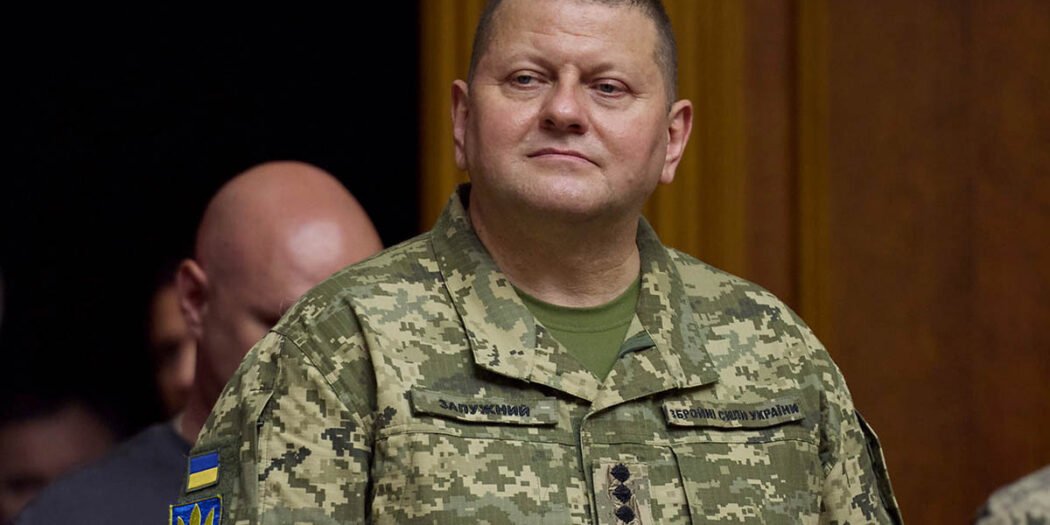Ukraine Sacks Top Commander, Faces Crisis of Confidence
The February 8 firing of Ukraine’s top general, Valery Zaluzhny, prompted frustration among the considerable share in the Ukrainian public who supported his leadership (East Journal).
Ukrainian President Volodymyr Zelensky sacked his top commander, General Valery Zaluzhny, on February 8, citing internal disagreements on further mobilization. He named Oleksandr Syrsky as his replacement, an unpopular commander who lost the city of Bakhmut to Russian forces and who has been accused of incurring excessively high losses there. However, more positively, Syrskyis also credited with the defense of Kyiv and Ukraine’s successful 2022 counteroffensive. Zaluzhny, meanwhile, retains high approval among the public, and his firing has sparked public backlash.
Under increasing pressure from Russia’s larger manpower, Ukraine faces a recruitment problem. Most units are running at around 35 percent strength, sometimes less, with aging and unmotivated soldiers. Ukraine can barely afford new recruits, and those who do enlist are often inexperienced and poorly-trained. In the face of this crisis, Zaluzhny reportedly wanted a new mobilization order for 500,000 new Ukrainian recruits. Zelensky disagreed, prompting Zaluzhny’s dismissal. This disagreement and firing mark the conclusion of a several months-long public dispute between the two men over issues including appropriate responses to the personnel shortage, as I’ve previously documented.
Because of this manpower problem, Ukraine is not demobilizing its soldiers, leading to protests from those advocating the return of their friends and family from the front lines. However, demobilization would further worsen the recruitment shortage. Zaluzhny’s dismissal has also dissuaded volunteers, owing to the terminated general’s popularity among the Ukrainian people and potential recruits. Additionally, Zelensky’s August firing of all regional recruitment heads, many of which have not yet been replaced, has further slowed the pace of recruitment. Nevertheless, bowing to public pressure, the Ukrainian Parliament is working on a bill to reform their demobilization policies.
The first hints of a potential dismissal came in late January, when Zelensky informed Zaluzhny in a meeting of his intention to fire the commander. Zelensky’s office initially denied that Zelensky had given any such order, leading to speculation that Zaluzhny’s allies may have leaked it beforehand. That way, it would further boost his popularity through the public outcry that would come from his dismissal as an already well-liked figure. This strategy, if it was intentional, seems to have worked: Zaluzhny’s popularity remains strong while Zelensky’s has sagged over the course of the war, setting Zaluzhny up as a potential political rival. Syrsky, the new commander, is on better terms with Zelensky, leading to further speculation that the firing was politically motivated, with the mobilization disagreement being an excuse.
Another potential explanation is that Zelensky, notorious for changing personnel when there is a lack of progress, fired Zaluzhny for his mishandling of the 2023 counteroffensive. Front-line soldiers in particular, with whom Zaluzhny is very popular, believe that Zelensky is trying to blame his failures on the former commander. With a US aid package stalled and an EU aid package initially stalled (it was still stalled when the first reports of the dismissal were released, before being approved a day later), Zelensky could claim a new commander would make better use of the funds, which may encourage the passing of those aid packages. However, it’s unclear that a new commander will perform any better on the battlefield, especially with Ukraine switching to a more defensive strategy this year.
With Russia regaining the initiative and Western support for Ukraine faltering, Ukraine faces significant challenges. Recruitment challenges, low morale, disagreements at the upper echelons of their leadership, and public frustration with the handling of the war will make it harder for Ukraine to fight off Russian aggression, posing an existential threat to its existence as a state.

